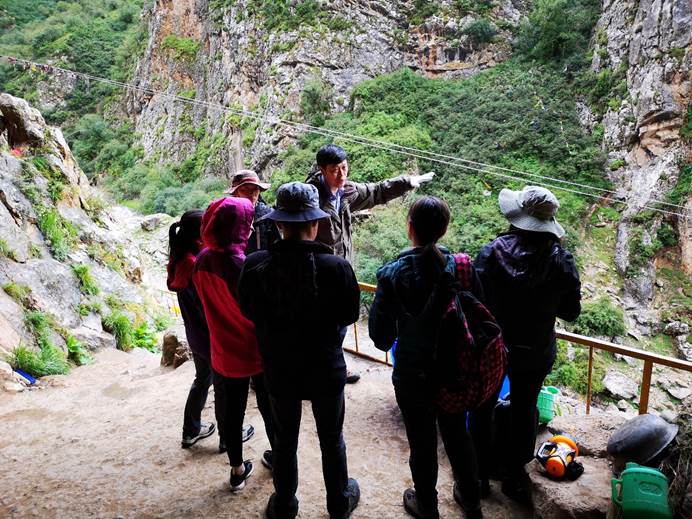

The Tibetan Plateau, as Earth’s "Third Pole," was reported to be first occupied by modern humans probably armed with blade technology as early as 40 ka BP. However, no earlier hominin groups had been found or reported on the Tibetan Plateau until a recent study was published by Chinese researchers.
A joint research team led by CHEN Fahu from the Institute of Tibetan Plateau Research of the Chinese Academy of Sciences and ZHANG Dongju from the Lanzhou University reported their studies on a human mandible found in Xiahe, on the Northeastern Tibetan Plateau. The findings were published in Nature.
The researchers found that the mandible came from an individual who belonged to a population closely related to the Denisovans first found in Siberia. This population occupied the Tibetan Plateau in the Middle Pleistocene and adapted to this low-oxygen environment long before the arrival of modern Homo sapiens in the region.
So far, Denisovans are only known from a small collection of fossil fragments from Denisova Cave in Siberia. Traces of Denisovan DNA are found in present-day Asian, Australian and Melanesian populations, suggesting that these ancient hominins may have once been widespread.
This study confirms for the first time that Denisovans not only lived in East Asia but also on the high-altitude Tibetan Plateau. It also indicates that the previously found possible introgression of Denisovan DNA (EPAS1) into modern Tibetans and Sherpas, who mainly live on the high-altitude Tibetan Plateau and surrounding regions today, is probably derived or inherited locally on Tibetan Plateau from Xiahe hominin represented by this Xiahe mandible.

Fieldwork in the Baishiya Karst Cave and surrounding regions. (Image by ITP)
The reported Xiahe mandible was found on the Tibetan Plateau in the Baishiya Karst Cave in Xiahe, China. Researchers managed to extract collagen from one of the molars, which they then analysed using ancient protein analysis. Ancient protein data showed that the Xiahe mandible belonged to a hominin population closely related to the Denisovans from Denisova Cave.
The robust primitive shape of the mandible and the very large molars still attached to it suggest that this mandible once belonged to a Middle Pleistocene hominin sharing anatomical features with Neandertals and specimens from the Denisova Cave.
Attached to the mandible was a heavy carbonate crust. By applying U-series dating to the crust, the researchers found that the Xiahe mandible is at least 160,000 years old, representing a minimum age of human presence on the Tibetan Plateau.
The similarities between the Xiahe mandible and other Chinese specimens confirm the presence of Denisovans among the current Asian fossil record. The current study paves the way towards a better understanding of the evolutionary history of Middle Pleistocene hominins in East Asia.